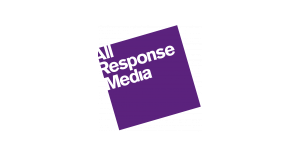Whilst the world sees big shifts in consumer habits as a result of the COVID-19 outbreak, we look at what the major shifts in consumption are and how this has changed the digital advertising landscape.
5 trends we’re currently seeing:
- Quantum Metric suggests e-commerce sales saw revenue growth of 52%, and conversion rates are seeing a growth of nearly 9%.
- Facebook usage is up as much as 50% in some countries. However, this is not translating into an increase in ad spend. An IAB survey reports March saw a 33% reduction in Facebook ad spend.
- A surge of buying on Amazon, leading to Amazon reportedly hiring another 100,000 workers. Interestingly, Amazon has also cut the majority of ad spend on Google. They have also delayed the delivery of non-essential items by a few weeks.
- An increase in online gaming activity as users are stuck at home.
- A rise in using video streaming sites such as Netflix, Disney+ and Amazon Prime. As well as these streaming sites, Google reported a spike in search trends for large pirate streaming services in Italy, and this spike is also expected across other markets.
All Response media viewpoint
It’s important for us as an agency to recognise these shifts in media consumption, to allow us to provide the best recommendation for our clients who are still active in the market. Some shifts can be beneficial for us and we can take advantage of the opportunity, but we also need to be aware, that not all increases in consumption will be beneficial to our clients.
The increase in streaming is one where we need to be cautious. Outside of the main streaming services, such as Netflix, we’ve also seen a rise in usage of pirate streaming sites. Not only are these sites making money from the increase, but showing ads on these sites poses a great risk in terms of brand safety. Clients should be careful of how they are running programmatic, especially with this increased risk. As an agency, the risk is lowered as we use tools such as MOAT and Grapeshot to ensure we’re appearing against safe content.
Other changes we should be more conscious of are the increase in online gaming and the reduction of advertisers present on the likes of Google and Facebook. In the first instance, as there will be increased in-app gaming placements, this could work well for clients who see these placements work. However, consider that these placements might not work for everyone, so we need to ensure we’re pulling regular placements reports and optimising regularly. For the second instance, reduction in competitors on core platforms means reduced rates. This is positive in that we can get more volume for a lower cost. However, on clients where we are seeing the majority of competitors pull out, we need to ask the question, should we still be in the market?
It is a volatile landscape and we need to be smart. Whilst we adapt to the changes we’re seeing short-term, we need to stay agile in the market. The above consumer changes may continue to shift, and one big question is, what is this going to look like long-term? When planning 6, 12, 18 months into the future, we need to be aware of what these changes could be. For example, surveys in China suggest everyone will want to be outside, and streaming channels could, therefore, suffer when we do come out of lockdown especially if it is during the warmer months. As well as this, planning teams should be conscious of the results in this period we’re in and applying these to future campaigns.
Read more information on our digital services.


